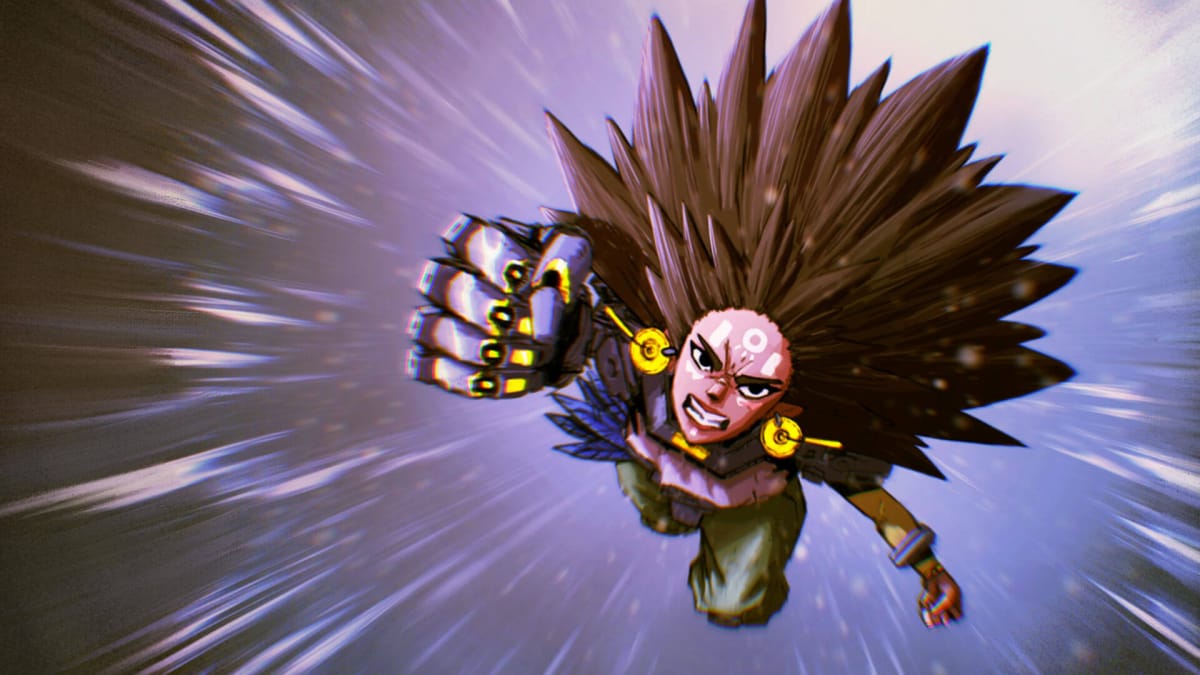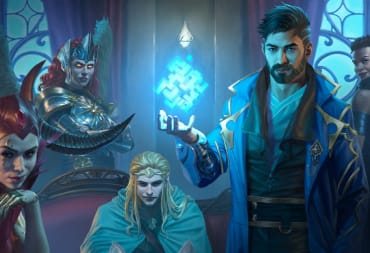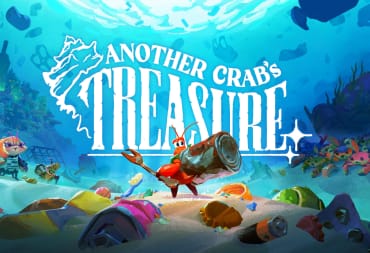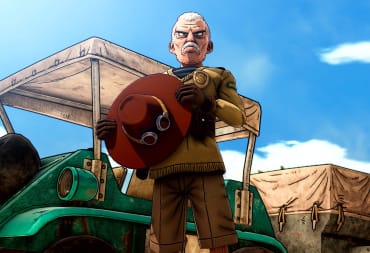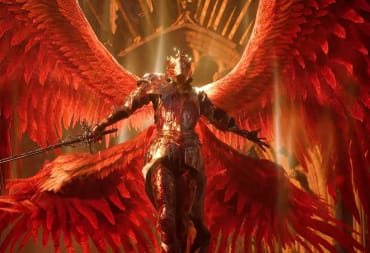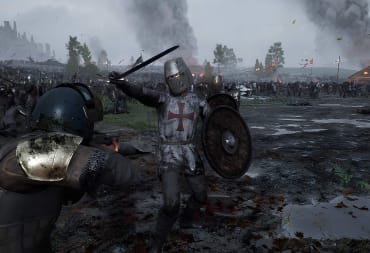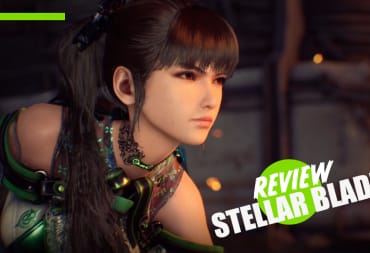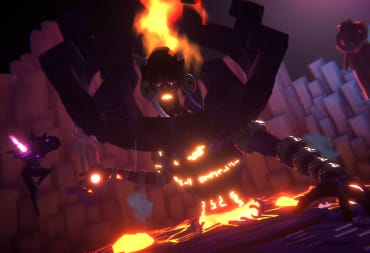For as long as human history has been cataloged, mythologies have been ingrained into our collective psyche. Naturally, games would also look to the past to inform a setting, mechanics, and so on. Developer Lienzo (Hunter's Legacy, Mulaka) looks toward the past in two disparate respects: Aztec mythology & early 3D-era game design. These two fundamentals course through Aztech Forgotten Gods and succeed in it standing out amongst a cluttered action/adventure market. Which is a shame that its polish won’t earn the same credit as its personality.
In an alternate universe where The Aztec Empire wasn't colonized by Europeans, the thriving metropolis Tenochtitlan sits as a technological beacon of humanity. In this far-advanced future, a young Achtli joins her lead archeologist mother, Nantsin, at a secretive dig site. In desperation of this precious research being thwarted, she equips and tests her mother’s latest archeological finding: a giant stone gauntlet. The subsequent domino effect inadvertently results in her trapping her mother within the dig site, awakening eons-old colossi across the land, and the essence of a god (Tez) residing within her. Now, the fate of everyone she cares about rests on her shoulders.
Blast Off!
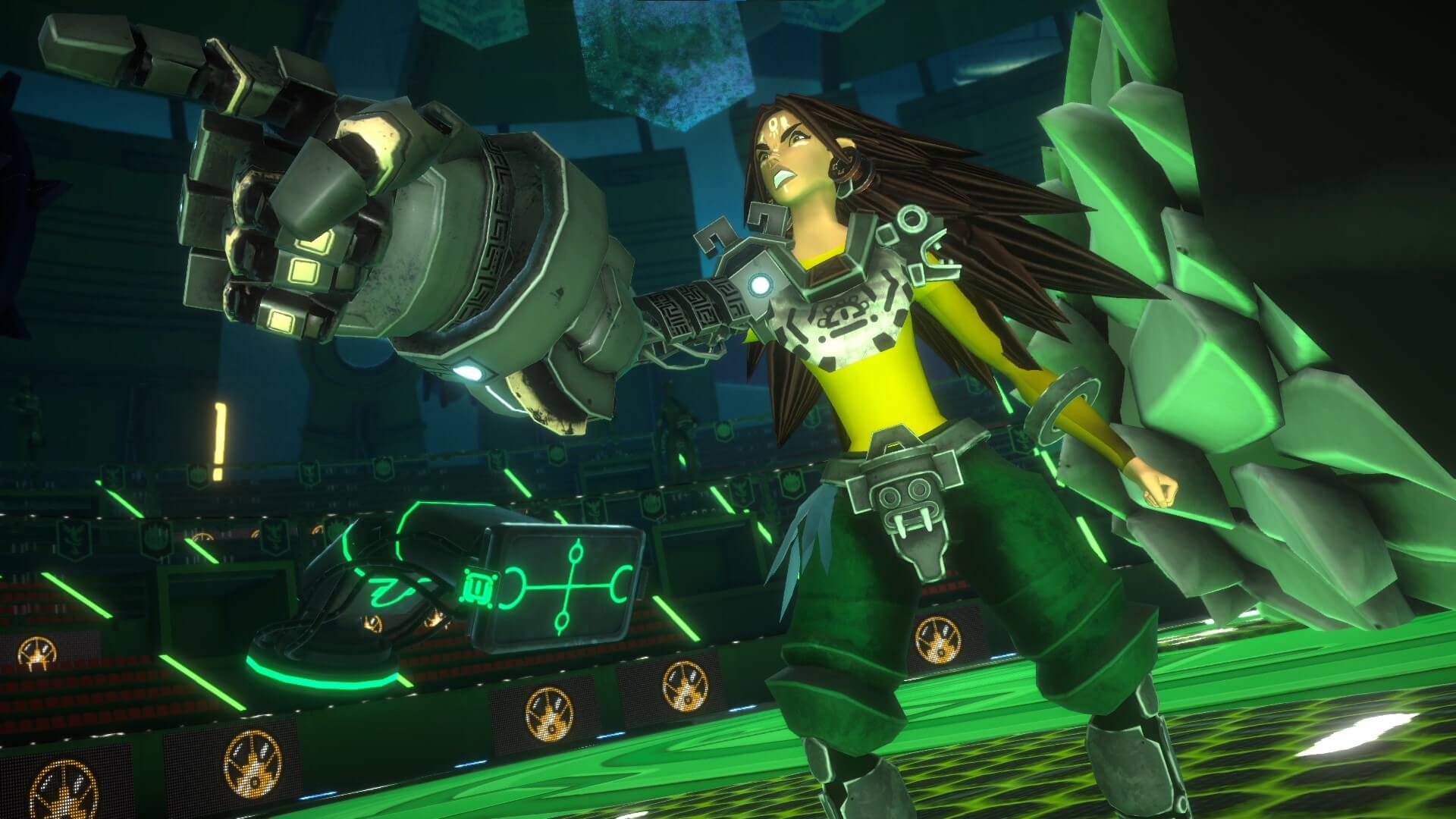
One may be quick to judge these two for throwing caution to the wind, but I'm here for it! Similarly, the game's design doesn't consider long-winded formalities in getting you to enjoy what Achtli's new gauntlet, Lightkeeper, has to offer. There's a gameplay break between these early plot points enabling you to test this arm's rocket propulsion and explore nearly all of Neo-Tenochtitlan out of the gate. "Wait a minute,” you say, "an open-world game eschewing the modern-day fetters of protracted prologues that seem specifically designed with Steam's refund policy in mind?" I'll give you a minute to sit back down.
In all earnestness, being let off the leash within 10 minutes of starting was a genuine surprise compared to the deluge of recent blockbusters I’ve played. It captures what the ideal beginning could look like to a 5th-gen superhero game. Once the cutscene completes, you can immediately see how she grips this gauntlet, adjusts trajectory mid-flight, how quickly the fuel meter refills upon touching the ground, the aerial boost rings scattered throughout, and so on. You can soar to empyrean heights above the city and plummet to the ground without a worry of fall damage. Even without all the gauntlet’s bells and whistles from the start, this city genuinely feels like a playground.
The freedom is palpable and enlivening, but it's not without drawbacks. Ambitious starts sounding more like pure insanity when considering these rocket-propelled maneuvers have to be mapped to one control stick. When considering all the mechanical permutations on the x/y/z axes Achtli has to mirror, her insanely jittery animations feel like the game's struggling to keep up. This is complicated further when a permanent stat upgrade enables her to jump off of walls. Because of the inherent flakiness in complex maneuvers, it’s nigh impossible to ever feel as though you conquer your surroundings with a controller. The specificity demanded in optional race challenges made me give up on them after a few tries.
Boulderdash!
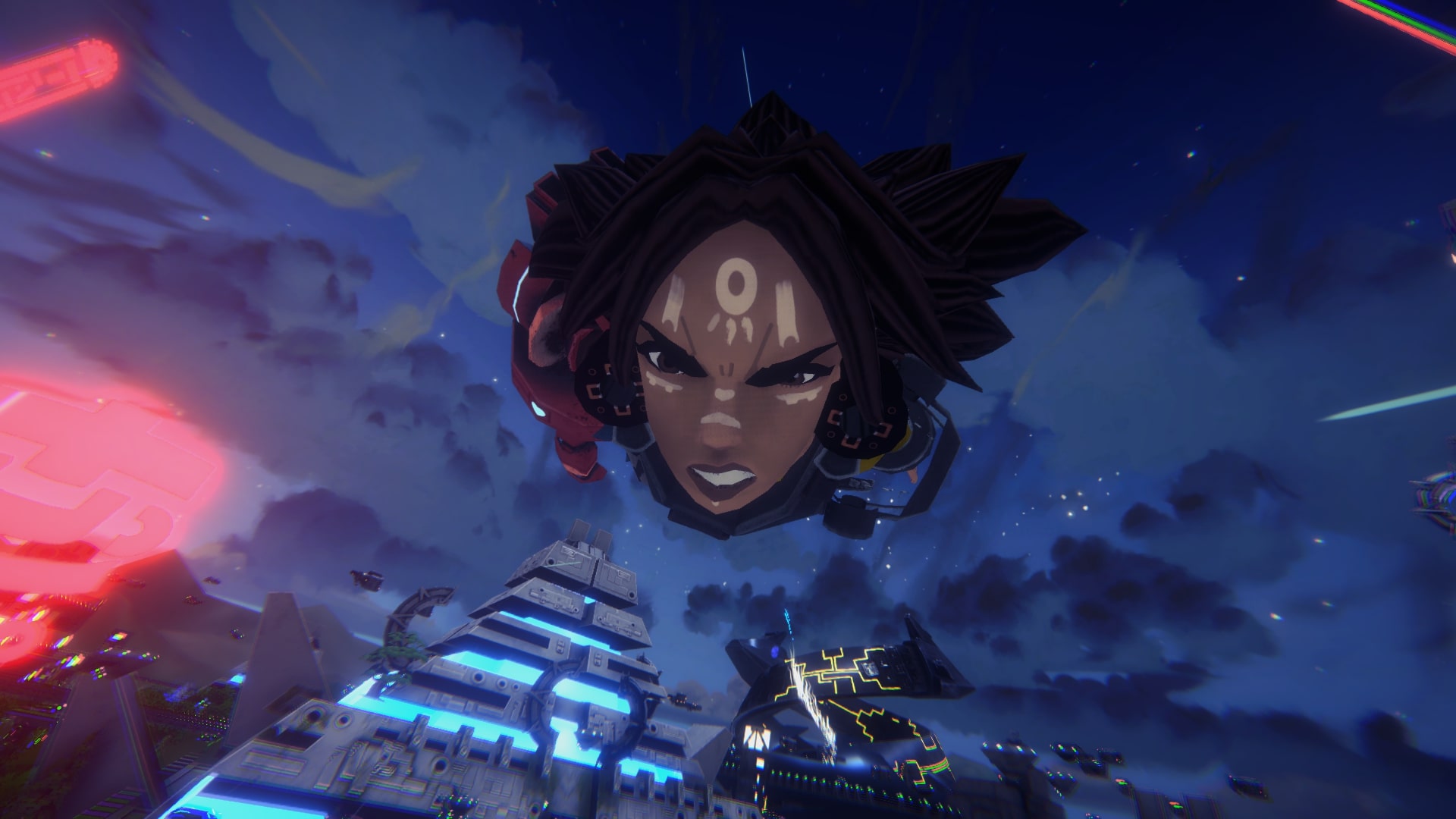
This rocket-propelled mobility is grafted onto an action game. In this respect, the structure is more familiar: each stone colossus has an essence that'll get Achtli closer to freeing her mom, each boss touches on a different theme (mechanically and visually), and most encounters award her gauntlet with a new schematic. Although a few are more visually impressive than others, every god captures a different aesthetic; plus, the supplemental collectible for each one is helpful for those not well-versed on this mythology.
When it comes to concept, they all hit accordingly and feel distinct from one another; however, execution isn't the same story. Going after their marked weak spots can sometimes result in an antagonistic camera. When the auto-lock pops up, that invisible hook shot yanking you towards his weakness feels so uncoordinated. And since every hit – besides the finisher – is just mashing the X button during a quick-time event window, it's missing that oomph! you'd expect from a half-ton stone fist. One of the most common moves across most bosses is what I'd call a Swiss-cheese shield: an expanding hard-hitting bubble unless you navigate through one of its holes. Given the finicky behavior of flying, sometimes mid-air adjustments seemed insane; also, the small timing windows to dodge those and reach their weak spots were aggravating for the final two gods.
Beyond those battles, minions hover around the city and in challenge rooms. They follow the same template of a boss weak point: time your X button presses within a narrow window. If unsuccessful the first time, just wait for your UI indicator to strike again. Although there’s a micro-layer of complexity compared to mindless button-mashing, it quickly feels trivial to get a successful 3-hit with the same finisher animation. And since their offensive wind-ups are so languid, you can essentially blitzkrieg entire squads without being touched. Whether dealing with them in the city or fighting challenges, they’re just boring filler that rewards you with currency for cosmetics and ability upgrades.
Style And Substance
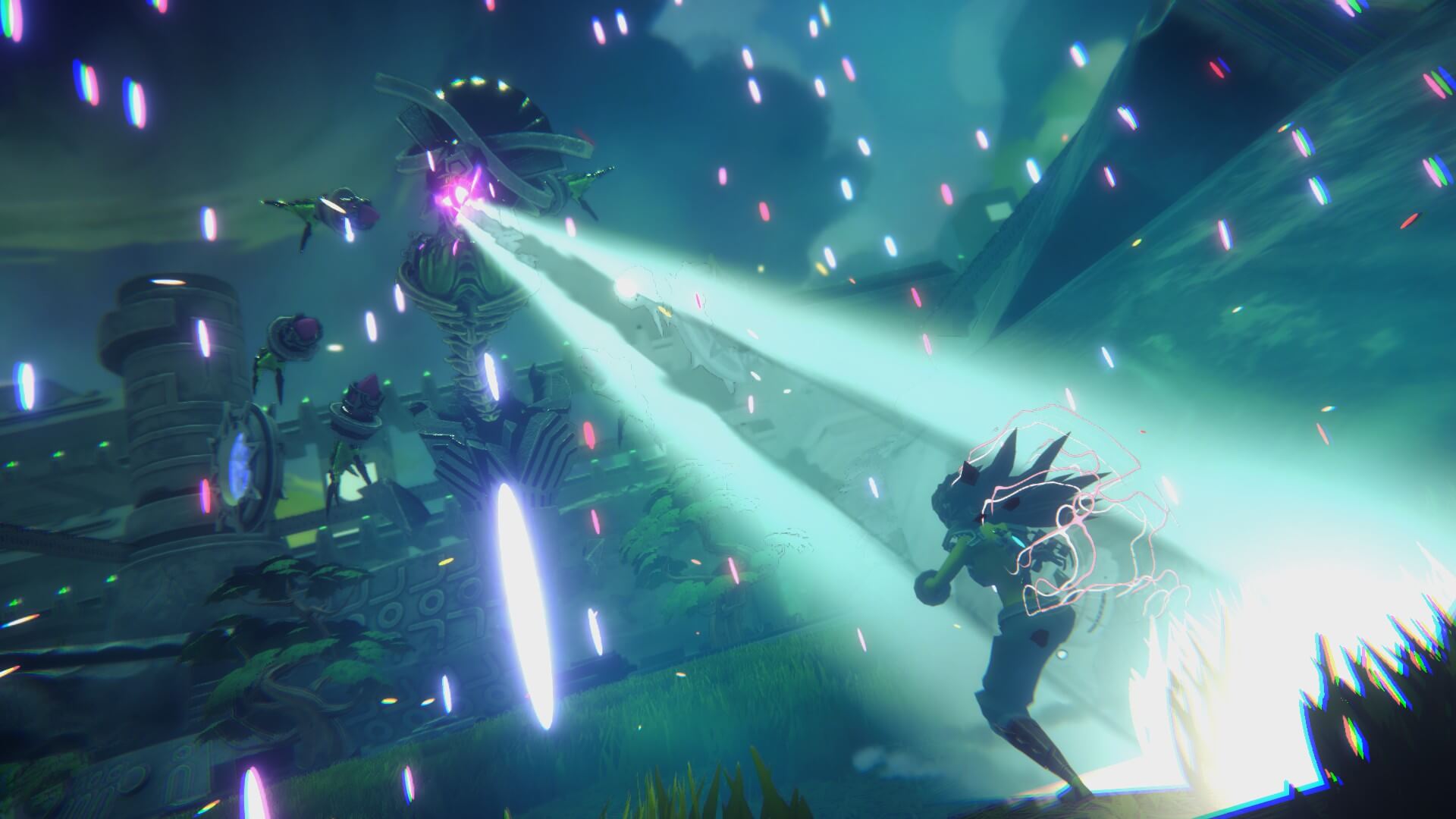
On top of these praises & frustrations comes the mode through which you see everything: the camera. I brought up its wonkiness against bosses, but it's also incredibly annoying within confined areas. Hell, even the prologue gave you a sense of it still needing some polish. It's a shame too because some stylistic choices give it a different energy: every charged punch comes with a slow-tilting Dutch angle and Achtli is offset to the left when walking but center frame when flying. I'd appreciate these creative flourishes more if tied to a consistently functional camera.
Dissatisfaction sneaks into its visuals in some respects too. With regards to architecture, the techno-Aztec metropolis looks vibrant and unique. The term 'cyber-stone' feels fitting here for both the enemies and the world itself. It genuinely captures what one could imagine the Aztec Empire building towards if cyberpunk and sci-fi existed as genres here. It's a shame that such an expansive world is strapped to the Unity Engine. When you consider the texture pop-in while soaring through the sky, low-resolution foliage, mostly-recycled NPCs, Achtil’s hair clipping through her shoulders, and so on, those N64/PS1-era staples can occasionally disrupt appreciation for its art design. It’s less about finger-wagging at a developer at a budget and more of my mind’s eye seeing its greater potential.
In keeping with most early 3D titles, the voice acting is limited to everyone grunting or saying a word before every few sentences. You probably know the old staple. Although that wasn't as distracting, it's a shame to exclusively rely on pantomimes for its emotionally heavy moments. Fortunately, tension with boss fights stays high thanks to Diego Borja's wild soundtrack. Rock is at the beating heart of his composition, but his dabbling with wind instruments, chants, and more lend it a different texture. Coatlicue's Theme is but one example of why it's among my favorite game soundtracks of the year (so far).
Stories Worth Seeing
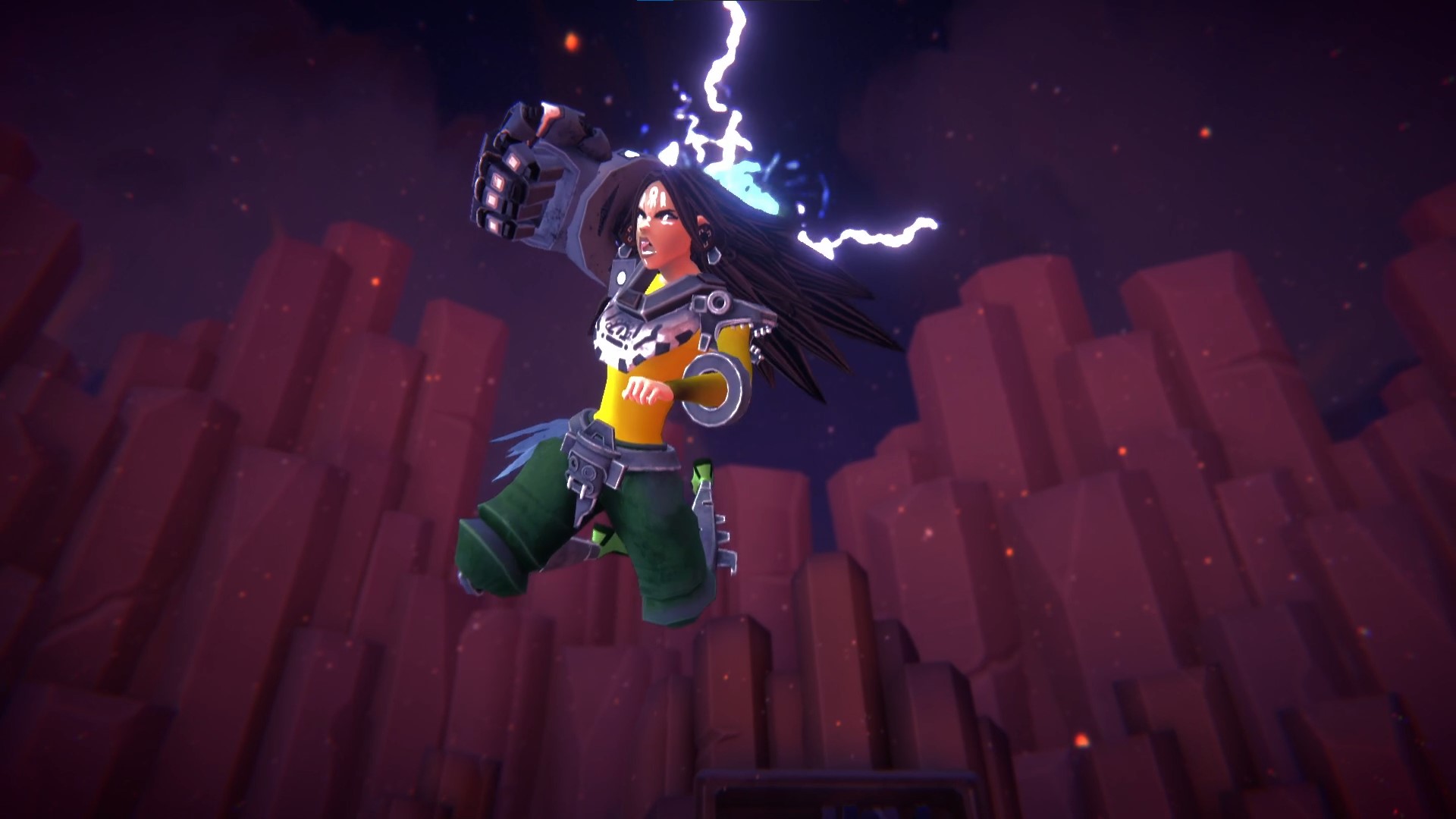
Aztech's narrative won't set the world on fire with retooling The Hero's Journey, but the little things add just enough flavor. You probably know this song and dance: the heroine is foisted into the new role as a god-slayer, a spiritual mentor helping to excise her petulant attitude, coming to terms with past guilt, and so on and so on. Aside from one artificial conflict and resolution feeling unearned, it's a nice yarn that succinctly hits most of its paces. Little touches like the Spanish (or directly Aztec?) words sprinkled into the English subtitles, Achtli & Tez's banter, along with a couple inspired revelations added something special to the expected.
If there's one overarching takeaway with Lienzo's third effort is that it could've been more. Aside from the soundtrack and some nostalgia-driven creative decisions, I can see this tapestry being improved – marginally or otherwise – in every other respect. That doesn’t outright disregard its accomplishments, but it does dampen my enthusiasm to recommend it beyond ardent genre fans (in its current state). Taken as a whole, Aztech Forgotten Gods manages to stay airborne but never truly soars.
TechRaptor reviewed Aztech Forgotten Gods on Xbox Series X with a copy provided by the developer. It is also available on Xbox One, PlayStation 4, PlayStation 5, Nintendo Switch, and PC.
Review Summary
Pros
- Creative Boss Battles
- Inspired Art Direction
- Fitting Soundtrack
- Engaging Flying & Freedom
Cons
- Antagonistic Camera
- Exciting But Also Finnicky Rocket-Propelled Locomotion
- Repetitive, Simplistic Gameplay Outside Of Boss Fights
- Inconsistent Technical Visuals
Have a tip, or want to point out something we missed? Leave a Comment or e-mail us at tips@techraptor.net
